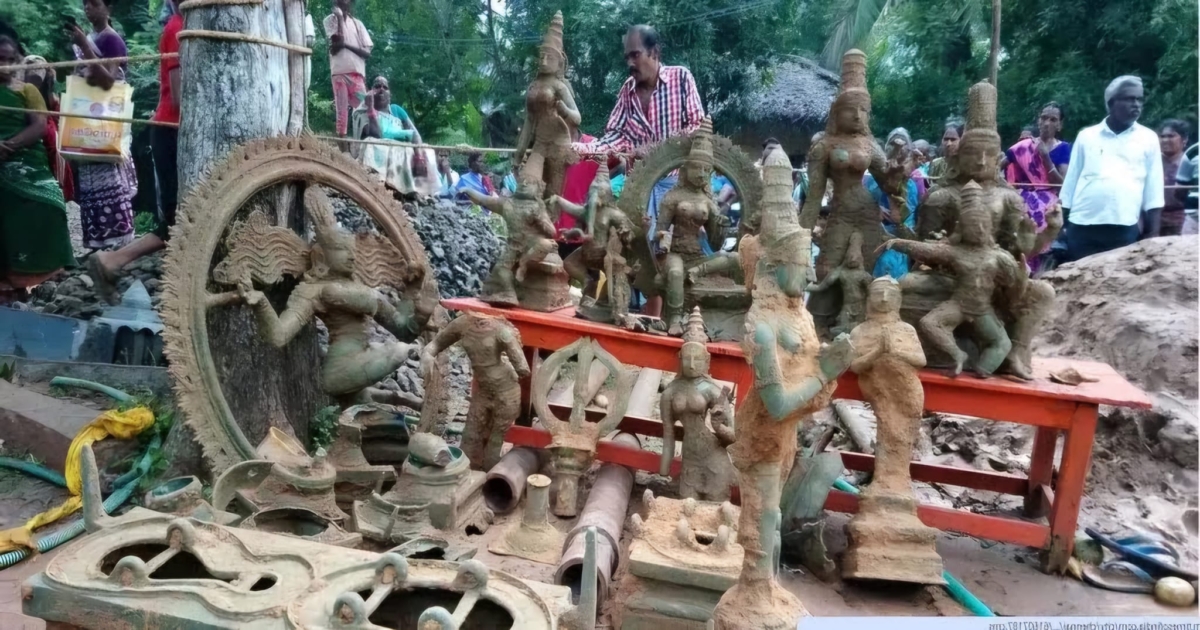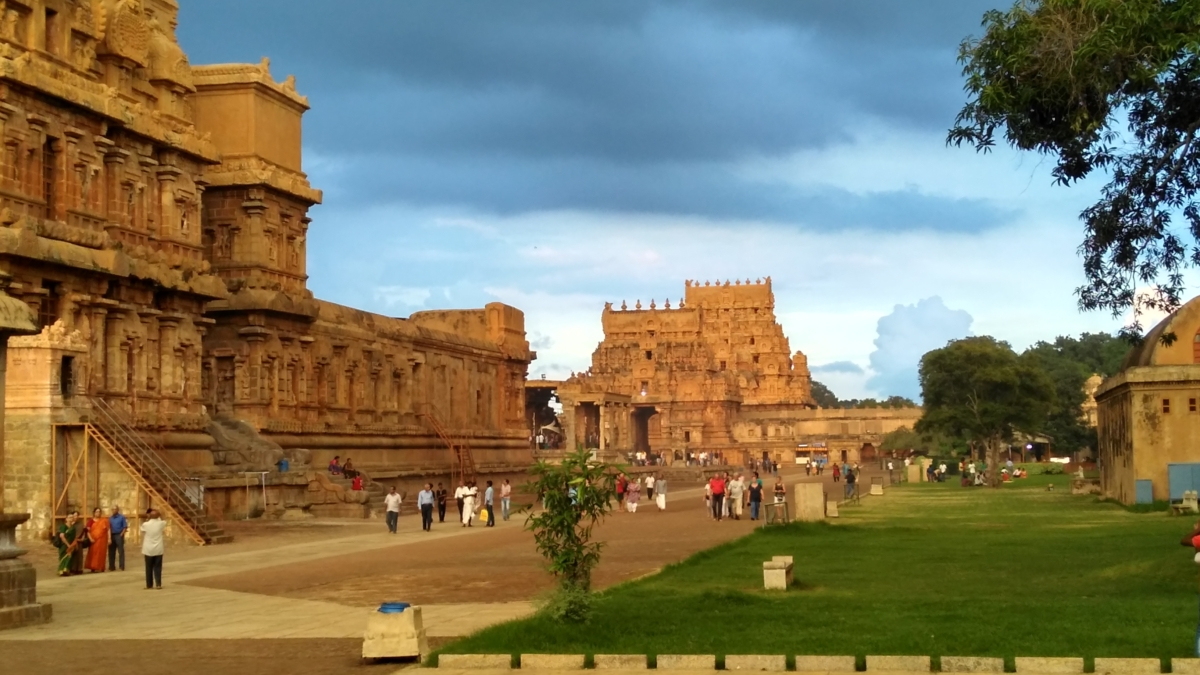Tamil Nadu’s Thanjavur district has once again proven itself as a treasure trove of history, with the recent unearthing of rare Panchaloha murtis and artifacts dating back to the illustrious Chola era. This remarkable discovery was made in Kolirayanpettai village near Papanasam, during a construction project on the property of local resident Mohammed Faizal. Workers, digging for a new house foundation, stumbled upon these ancient relics, bringing to light a chapter of Tamil Nadu’s rich cultural heritage.
As news of the discovery spread, it became a beacon for tourists and history enthusiasts alike, eager to witness the remnants of a glorious past. The excavation revealed several well-preserved Panchaloha murtis, representing deities such as Somaskandar, Chandrasekharar, and Thirugnanasambandar. These figures, deeply revered in Hindu mythology, alongside incense burners, trays, and pedestals used in religious ceremonies, offer a tangible connection to the spiritual and artistic practices of the Chola dynasty.
Officials from the Archaeological Survey of India (ASI) promptly arrived at the site to secure and assess the artifacts. “The significance of these discoveries cannot be overstated,” remarked an ASI official. “The artifacts provide valuable insights into the religious and cultural practices of the Chola dynasty, known for its unparalleled contributions to art and architecture.”
This find adds to Thanjavur’s allure as a destination rich in historical and cultural attractions. Tourists visiting the region can now include Kolirayanpettai in their itinerary, complementing their exploration of iconic landmarks such as the Brihadeeswarar Temple, a UNESCO World Heritage site renowned for its grandeur and architectural brilliance.
This recent discovery is part of a series of significant archaeological finds in Tamil Nadu. In 2017, near Pattukottai in Thanjavur district, workers uncovered 14 ancient murtis and 7 pedestals, all crafted from Panchaloha. In 2021, in Perambalur district, a farmer’s son stumbled upon six Hindu murtis while digging the foundation for his family’s house. These finds highlight the region’s ongoing archaeological significance and offer tourists a unique glimpse into the past.
As the excavation in Kolirayanpettai continues, experts are hopeful of uncovering additional artifacts that may further illuminate the cultural practices of ancient Tamil Nadu. Preliminary assessments suggest that these artifacts are likely from the Chola period, spanning from the 9th to the 13th century Common Era (CE), a time renowned for its flourishing artistic and religious developments.

Historically, such artifacts were often buried for protection during periods of social upheaval, influenced by factors such as the collapse of temple structures or the need to safeguard religious icons from invaders. These discoveries not only enrich our understanding of Tamil Nadu’s past but also reaffirm the region’s status as a custodian of India’s diverse cultural heritage.
The local community has expressed pride and admiration for their cultural heritage, as the discovery has sparked local and tourist interest. Authorities urge caution and respect for the historical significance of the site, ensuring the preservation of these artifacts for future generations.
For tourists, the unearthing of these ancient Panchaloha murtis in Thanjavur district adds another layer of intrigue and excitement to their visit. As excavations progress, the region continues to reveal its vibrant history, offering a deeper appreciation of the Chola dynasty’s enduring legacy in South India. Whether you’re a history buff, a cultural enthusiast, or simply a curious traveler, Thanjavur promises a journey through time, enriched with the splendors of its ancient treasures.

